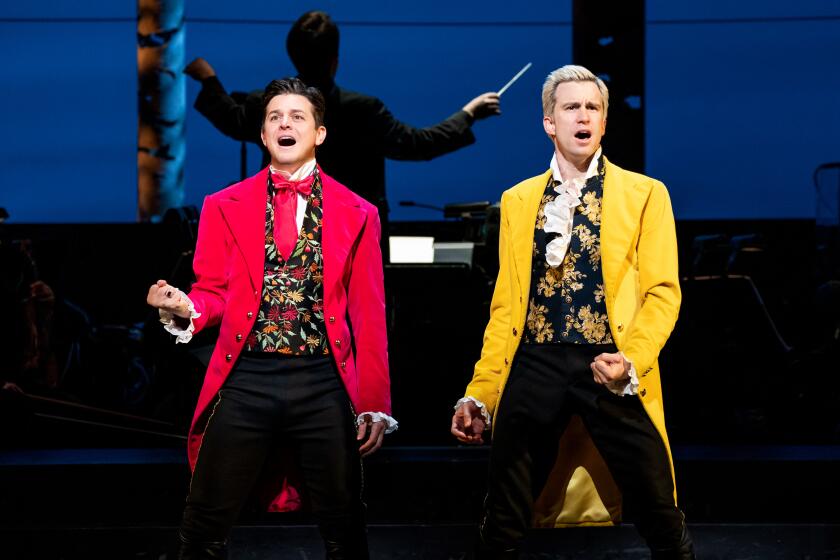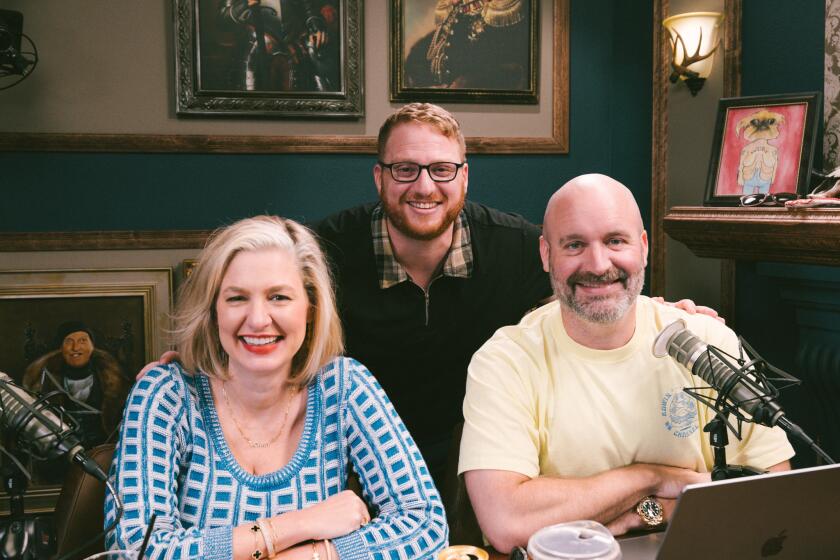Conjunto makes a colorful case for its octet of cellos
Riding a wave of distinction as the “world’s only full-time cello octet,” Conjunto Iberico has been busy quelling skeptics and winning friends since leader Elias Arizcuren formed the group in 1989. But the acclaimed Amsterdam-based ensemble has yet to make its mark in North America, a project fleetingly broached through a performance at the Ford Amphitheatre on Saturday evening, before the group headed to Mexico.
In Conjunto Iberico’s hands, what might seem like an arbitrary lifting of the cello section out of an orchestra instead strikes the ear as a logical ensemble of like instruments, with uniformity and diversity on its side. The cello’s broad register and its legacy as both an expressive and supportive musical force make it ideal for the multiple instrument tactic, as this group persuasively demonstrated.
The ensemble stated its case with a compact yet eclectic program, leaning on Spanish and Latin American music. Spanish soprano Laura Alonso also lent her lustrous voice to several works, including Brazilian composer Marlos Nobre’s colorful “Tres Cancoes de Beiramar” and Manuel de Falla’s “Siete Canciones Populares Espanolas,” with Alonso sounding warmly evocative.
Two purely instrumental works relied heavily on rhythmic fervor and math in different directions. Philip Glass’ “Symphony for Eight,” adapted from a movement from his Third Symphony, sounds fresh with its new textural heft and focus wedded to chugging eighth-note locomotion, suddenly sounding closer than ever to rock and roll guitar culture. (Before their performance, the musicians aptly noted the generous rock audience for Glass’ easy-does-it music).
Spanish composer Cristobal Halffter’s “Fandango, Sobre un Tema del Padre Soler” is an engaging ensemble piece. A simple and obsessive fandango theme ebbs and flows as the composer puts the cellos through inventive paces.
The group closed with Brazilian composer Villa-Lobos’ landmark “Bachianas Brasileiras,” which includes passages designated for a cello octet, one of the few examples of the form before this group began.
More to Read
The biggest entertainment stories
Get our big stories about Hollywood, film, television, music, arts, culture and more right in your inbox as soon as they publish.
You may occasionally receive promotional content from the Los Angeles Times.










